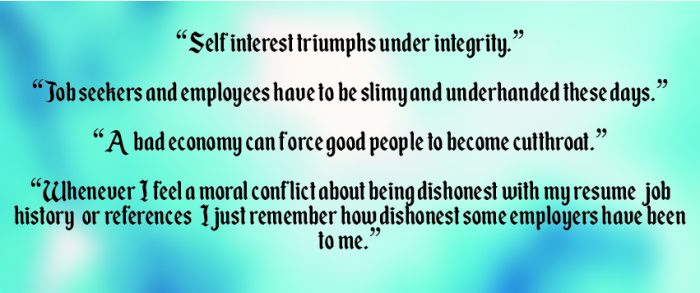10.17.19
The Interactive Process is a Two-Way Street
HR Headliner
“A situation or relationship involving mutual or reciprocal action or obligation.”
~ Oxford Dictionary
Most California employers are well-versed in the requirement to engage in an interactive process and provide reasonable accommodations for an employee’s disability. We also understand that our decision making should generally err on the side of the employee to minimize legal risk. However, all of this knowledge can sometimes create an overabundance of caution and “accommodations” in work schedule or performance without requiring the employee to do his/her part.
For example, an employee states that his supervisor’s strict expectations are causing debilitating stress… or a food service worker avoids eye contact with restaurant guests because she feels that looking downward keeps her anxiety levels low. These are real situations in which the employer wondered if there was a legal responsibility to accommodate the employee’s stated health condition. And the answer is… it depends.
The Equal Employment Opportunity Commission (EEOC) provides extensive guidance on how to provide reasonable accommodations under the Americans with Disabilities Act, and both the employer and employee have their own roles to play. Employees and applicants have specific responsibility to cooperate in the interactive process, to provide information about the disability and limitations, and to provide requested medical certification of the need for accommodation.
This means that in order to approve a reduced work schedule, a leave of absence, or modified job duties, a manger can (and should) ask the employee to submit a doctor’s note indicating 1) which of the essential functions of the job he/she is unable to perform, 2) accommodations that will allow the employee to perform those functions, and 3) the expected duration of the accommodations. Both parties should be willing to talk about the doctor’s recommendations, the employee’s and employer’s preferences, and explore other possible measures that might provide equal employment opportunity. According to the EEOC, “failure on the part of the employee to cooperate in the interactive process may result in a denial of the reasonable accommodation request” and the employee can (and should) be held accountable for the same standards of attendance and performance as others.
YES, it is always important to be responsive to employees’ requests regarding health conditions and to inform them of their rights and responsibilities under federal and state law. YES, you should be cautious when navigating employee disability issues and consult an attorney when in doubt. And YES, it is okay to insist that your employee do his/her part in the interactive process, rather than feel compelled to approve one-way demands.
09.17.19
Workplace Violence: Plan, Prevent, Protect
Uncategorized
It is a sad and unfortunate reality in our world today that a violent incident could happen in the workplace at any time. The idea of preparing for an active shooter or similar situation may feel overwhelming, but avoidance will only result in greater fear and confusion. Below are general suggestions for creating a workplace violence program. Your thoughtful preparation, employee training, and partnering with outside experts could literally save lives in the event of an emergency.
PLAN
- Develop a Workplace Violence Policy that clearly defines unacceptable behavior, requires timely reporting of suspected violations, and describes how concerns will be investigated and resolved. The policy should include guidelines for reporting domestic violence matters and personal restraining orders. It should also guarantee privacy and non-retaliation for employees who make good-faith reports.
- Establish a Threat Management Team to take the lead on investigations and coordinate incident response, if needed. Team members could include Human Resources, legal counsel, and other employees who could effectively respond to a concern or security event.
- Establish training plans for all managers and employees regarding your company policy, how to report concerns, and how each person should respond in an emergency situation. Members of management should receive additional training to recognize warning signs and mediate employee disputes.
PREVENT
- Consider offering an Employee Assistance Plan (EAP) to make a wide variety of health and wellness resources available to your staff. Employees who have exhibited concerning behaviors may be referred to the EAP for confidential counseling.
- Respond immediately and effectively to signs of problematic behavior or concerns expressed by employees. There is no “profile” to identify likely perpetrators of workplace violence, so management must take all situations seriously. Request the assistance of a workplace violence consultant to support an investigation and recommend appropriate action, when needed.
- Ensure prompt disciplinary action and security follow-up when an employee’s behavior is severe or does not improve. A leave of absence, suspension, or termination may be appropriate depending on the circumstances.
- Take necessary steps to protect employees who are victims of domestic violence as well as other staff members who may encounter the alleged abuser. This may include securing a temporary restraining order or discreetly posting a photo of the aggressor in locations with public access.
PROTECT
- In the event of a workplace violence emergency, the Threat Management Team and/or security staff should implement your pre-determined response plan. Call 9-1-1 immediately but recognize that actions taken by on-site personnel will have significant impact on the outcome of the situation.
- Move employees to a safer location, and prevent the attacker from moving to other areas of the building whenever possible.
- Account for all personnel and determine any who may still need help.
- Administer first aid to injured employees, if this can be done without placing victims or rescuers in further danger.
- Comply with emergency responders’ instructions.
Contact legal counsel, safety experts, or a workplace violence consultant for additional information, training, and support for your workplace violence prevention program.
08.07.19
August 2019: The Case for Background Investigations
HR Headliner
These statements, and many others like them, were recently posted by job seekers on a public Indeed forum, and are enough to scare even the most seasoned hiring manager.
It may be hard to believe that the professional-looking candidate sitting across from you is anything other than honest and forthcoming, but according to a 2017 HireRight survey, 85% of employers have found inaccuracies on a job application.
Additionally, California law prohibits seeking information about criminal convictions until after a conditional job offer has been made. An employer can no longer use questions about conviction histories on application forms or in the interview process to screen job candidates.
So if you can’t always trust the application and you can’t ask direct questions in the interview, how do you ensure a new employee has the right skills or education and doesn’t pose a threat to safety and security?
The solution is a consistent, legally-compliant background investigation program.
Smart employers plan their hiring process to include verification of job qualifications such as education and past experience, and post-offer criminal records searches.
These steps are a relatively small investment of time and money and could save your company significant amounts of both if you avoid hiring an individual who is unqualified or unsafe.
Sierra HR Partners would be happy to discuss our background investigation services and pricing with you. Our web site provides additional details or you may contact us for more information!
05.15.19
HR Headliner: May 2019
HR Headliner
HR Headliner: May 2019

The Right Stuff
Identifying and Closing the Skills Gap in your Workforce
Hiring and retaining talented employees is becoming a significant challenge for today’s HR professionals. A recent study published by the Society for Human Resources Management (SHRM) found that 83% of respondents had trouble recruiting suitable candidates in the past 12 months. A major factor in this difficulty is known as the Skills Gap – the difference between the skills an employer needs and those offered by its workforce.
While technical skills are certainly a factor (31% of respondents to the SHRM study reported a lack of trade skills such as carpentry or welding), “soft skills” are often the most-cited concern for managers across the country. Employees may be technically competent, but lack the creativity, critical thinking, and collaboration skills necessary for a business to be competitive.
So how can you close the skills gap with your employees and ensure that your workforce is prepared to meet company goals? An important first step is identifying both the technical skills and soft skills required for success in each position. Take a close look at your star performers – what are they able to do that others just aren’t grasping? What have you found to be missing in recent job applicants or new hires? Once you know what you’re looking for, the following practices can help to identify candidates with the right stuff and develop valuable skills in existing staff:
• Develop a succession planning program for key positions or hard-to-fill roles. Your current talent pool likely includes individuals who could become long-term superstars with the right coaching.
• Provide in-house training to develop the specific technical and soft skills needed by the organization. We know everyone is busy, but consider it a valuable investment of your time in building a strong, effective team.
• Use behavior-based interview questions to understand a candidate’s approach to topics such as teamwork, customer service, and conflict resolution. Avoid simple “yes/no” questions to which an applicant can easily guess the right answer, and probe for real insight into the soft skills the position requires.
• When using outside search firms, work with an experienced recruiting team that has a clear understanding of your company culture and values. The recruiter should be able to look beyond the job dates and certifications listed on a resume, and screen applicants who are likely to be an overall great fit.
03.12.19
HR Headliner: March 2019
HR Headliner

March 2019
The Growing Trend of Ghosting…
and What You Can Do About It!
Out of hundreds of resumes and applications, one stood out as your ideal candidate. The initial telephone interview was a delight, the in-person interview is scheduled, and you can practically taste the donuts you’ll buy to celebrate the new employee’s first day. But on interview day, the candidate is nowhere to be found and doesn’t respond to your attempts to follow up. You’re frustrated.. you’re disappointed… you’ve been ghosted.
The term “ghosting” may be new to you, but unfortunately, it’s become part of the recruiting lexicon throughout the country. In today’s economy, where there are more job openings than people looking for work, these baffling no-shows are occurring at every level of the organization. Talented candidates are likely fielding multiple interview requests and job offers, and they don’t see the need to stay in touch with an employer they’re no longer interested in. As hiring managers, we complain about the lack of respect for our diligent recruiting efforts, but workers often think of themselves as free agents who owe no loyalty, and may even feel empowered by the fact that they can simply walk away if a better offer comes along.
A big step in reducing your chances of being ghosted by a top candidate is simply recognizing that the recruiting landscape has changed. Job seekers are in the driver’s seat, and we can’t assume that candidates are sitting by their computers and telephones anxiously awaiting contact. Creative new strategies are needed to fill your vacant positions with top talent:
- Don’t stop the recruiting process once a great candidate has been identified.
- Continue to screen resumes and conduct phone interviews so you’ll have a full pipeline, if needed.
Avoid delays in the hiring process.
- Candidates are more likely to disappear if they feel the process is taking too long or when interview feedback is not provided.
- Make sure your compensation package and benefits are competitive in your market, and provide as much information as possible about the expectations of the position, pay and benefits, and company culture.
Don’t become the “ghost” by failing to reach out to non-selected candidates. Demonstrate respect for their time and efforts with prompt updates and well-wishes on their job search.
These steps of transparency and respect can increase the likelihood of receiving the same consideration from your candidates. And don’t stop once the job offer is extended! Continue to engage with them and maintain the excitement about joining your team. Then go pick up the tastiest donuts in town… and enjoy!





